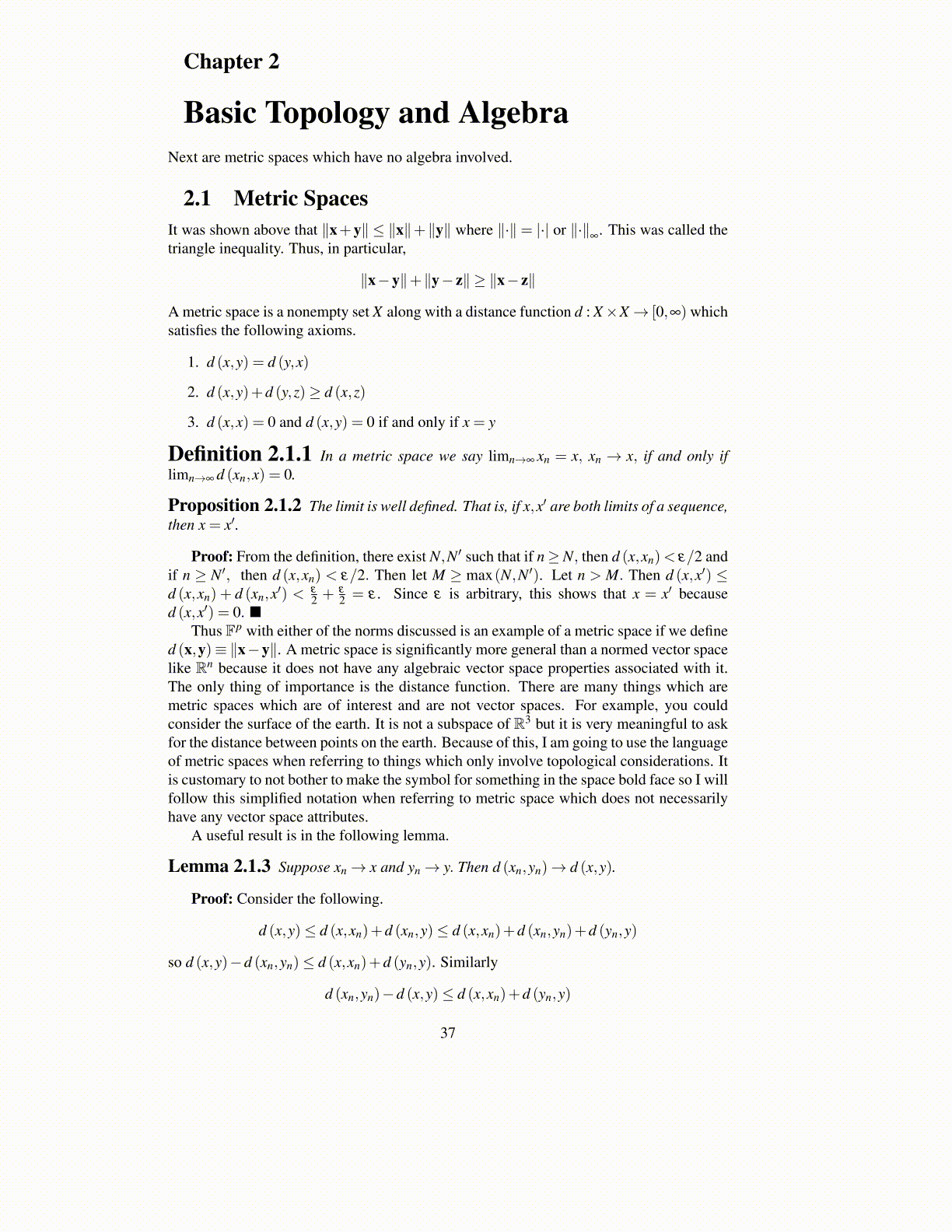
Chapter 2
Basic Topology and AlgebraNext are metric spaces which have no algebra involved.
2.1 Metric SpacesIt was shown above that ∥x+y∥ ≤ ∥x∥+∥y∥ where ∥·∥= |·| or ∥·∥
∞. This was called the
triangle inequality. Thus, in particular,
∥x−y∥+∥y− z∥ ≥ ∥x− z∥
A metric space is a nonempty set X along with a distance function d : X×X→ [0,∞) whichsatisfies the following axioms.
1. d (x,y) = d (y,x)
2. d (x,y)+d (y,z)≥ d (x,z)
3. d (x,x) = 0 and d (x,y) = 0 if and only if x = y
Definition 2.1.1 In a metric space we say limn→∞ xn = x, xn → x, if and only iflimn→∞ d (xn,x) = 0.
Proposition 2.1.2 The limit is well defined. That is, if x,x′ are both limits of a sequence,then x = x′.
Proof: From the definition, there exist N,N′ such that if n≥N, then d (x,xn)< ε/2 andif n ≥ N′, then d (x,xn) < ε/2. Then let M ≥ max(N,N′). Let n > M. Then d (x,x′) ≤d (x,xn) + d (xn,x′) < ε
2 + ε
2 = ε . Since ε is arbitrary, this shows that x = x′ becaused (x,x′) = 0. ■
Thus Fp with either of the norms discussed is an example of a metric space if we defined (x,y)≡ ∥x−y∥. A metric space is significantly more general than a normed vector spacelike Rn because it does not have any algebraic vector space properties associated with it.The only thing of importance is the distance function. There are many things which aremetric spaces which are of interest and are not vector spaces. For example, you couldconsider the surface of the earth. It is not a subspace of R3 but it is very meaningful to askfor the distance between points on the earth. Because of this, I am going to use the languageof metric spaces when referring to things which only involve topological considerations. Itis customary to not bother to make the symbol for something in the space bold face so I willfollow this simplified notation when referring to metric space which does not necessarilyhave any vector space attributes.
A useful result is in the following lemma.
Lemma 2.1.3 Suppose xn→ x and yn→ y. Then d (xn,yn)→ d (x,y).
Proof: Consider the following.
d (x,y)≤ d (x,xn)+d (xn,y)≤ d (x,xn)+d (xn,yn)+d (yn,y)
so d (x,y)−d (xn,yn)≤ d (x,xn)+d (yn,y). Similarly
d (xn,yn)−d (x,y)≤ d (x,xn)+d (yn,y)
37